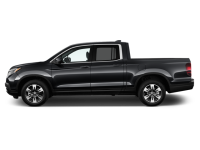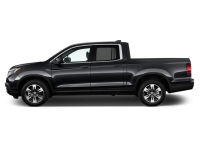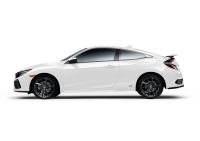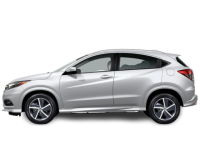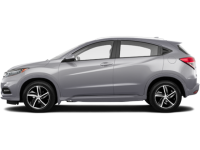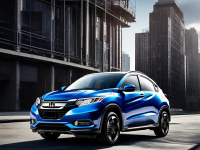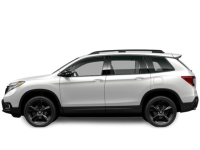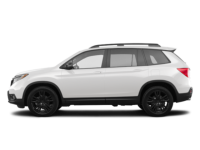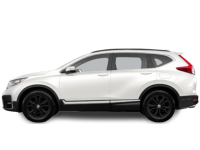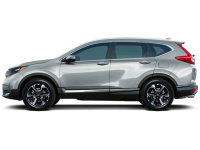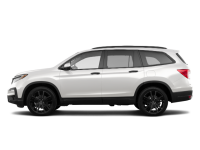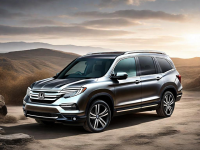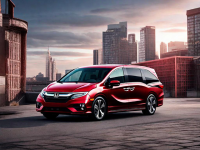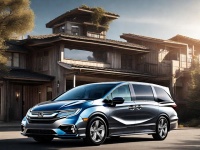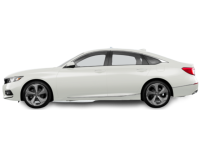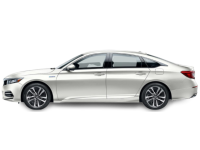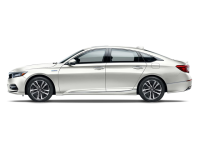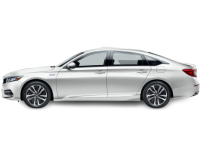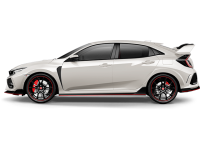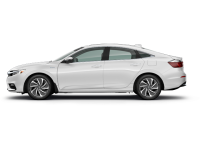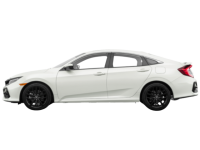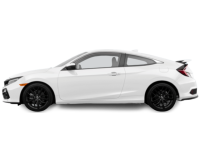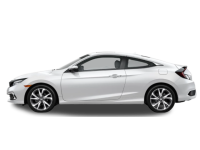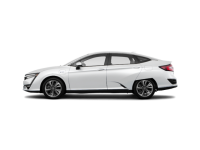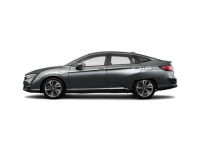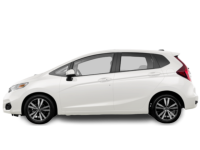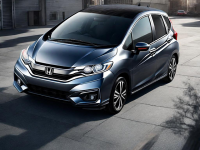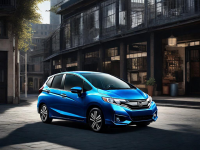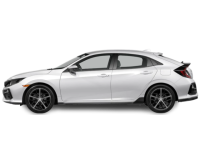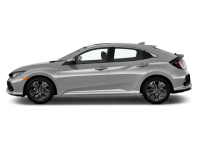New Honda Cars

Honda Canada
The Honda brand is synonymous with reliability, high resale value, low fuel consumption and environmental friendliness. Its wide range of products covers everything from subcompacts to pickup trucks, although some models have been criticized for their arguably uninspired design.
Honda began selling cars in Canada in 1973, starting with the Civic hatchback. The company also introduced the Accord hatchback, the Accord sedan and the sporty Prelude coupe before the turn of the decade.
The ‘80s was a breakthrough period for Honda. Model redesigns occurred every four years, keeping their product offering fresh and technologically advanced. Every model grew in size, was more powerful and better suited to the North American market. New versions of the Civic appeared, including a wagon that offered four-wheel drive as well as the legendary CRX, a pint-sized, two-seat sportster.
Honda completed construction of its first Canadian assembly plant in 1986. Initially, Accords rolled off the line, followed soon thereafter by Civics. A second plant was added in 1998, which produced Odysseys, Pilots, Ridgelines and, more recently, Civics. Various Acura models are also assembled in both plants.
By the end of the decade, several models were available with the Si badge, with more powerful engines and sportier suspensions. A two-door Accord was also introduced, and Honda even tinkered with a four-wheel steering system in the Prelude.
In 1990, a new Accord was launched and spawned a wagon version a year later. This fourth-generation model is considered by many to be the most reliable Accord in history. The Civic family lost its wagon and CRX, but gained the Del Sol for a few years, a two-seat coupe with a removable roof panel. A V6 engine was offered for the first time in a Honda, under the hood of the 5th-generation Accord.
The company’s line-up expanded in the mid-‘90s, as minivans and trucks started to appear. The first Odyssey, replacing the Accord wagon, offered room for 7 and was equipped with the Accord’s 4-cylinder engine, while the U.S.-only Passport was a clone of the Isuzu Rodeo, and its utter lack of reliability clashed with Honda’s bulletproof reputation. The successful CR-V compact SUV followed shortly thereafter.
The company further demonstrated their environmental responsibility by introducing a ULEV-certified engine in the 1996 Accord, while the short-lived EV Plus, an electric vehicle that featured a novel NiMH battery pack, was leased to consumers for a couple of years.
In 2000, Honda launched its first hybrid vehicle, the tiny two-seat Insight, still one of the most fuel-efficient cars ever produced to this day. The critically-acclaimed S2000 roadster was also introduced, the most potent sports car Honda developed after the Acura NSX. More versions of the Civic also appeared over the years: the natural-gas GX (U.S. only), the SiR three-door imported from Europe and the Civic Hybrid sedan.
While Honda was developing and testing fuel-cell vehicles such as the FCX and FCX Clarity, new trucks were launched, such as the 8-passenger Pilot, the active lifestyle-oriented Element as well as the Ridgeline pickup with its innovative in-bed trunk and dual-action tailgate. An Accord Hybrid was also available for a few years.
Today, Honda’s line-up of cars and trucks consists of the Fit subcompact, the Civic coupe and sedan, the Accord coupe and sedan, the five-door Accord Crosstour, the five-door Insight hybrid, the CR-Z hybrid, the Odyssey, the CR-V, the Pilot and the Ridgeline.
NEW! Recent Honda data sheets
Honda Pick-Up 2018-2019
Honda Coupe 2018
Honda Sport Utility 2018-2019-2020
- HR-V 2020Base MSRP$24,405 - $32,905
- HR-V 2019Base MSRP$23,100 - $31,800
- HR-V 2018Base MSRP$21,550 - $30,850
- Passport 2020Base MSRP$42,605 - $49,605
- Passport 2019Base MSRP$41,990 - $48,990
- CR-V 2020Base MSRP$28,690 - $42,590
- CR-V 2018Base MSRP$27,290 - $38,690
- Pilot 2020Base MSRP$37,405 - $51,305
- Pilot 2019Base MSRP$41,090 - $53,990
- Pilot 2018Base MSRP$40,590 - $51,990
Honda MiniVan 2018-2019
Honda Sedan 2018-2019-2020
- Accord 2020Base MSRP$28,490 - $40,190
- Accord 2019Base MSRP$28,190 - $40,190
- Accord 2018Base MSRP$26,590 - $39,790
- Accord Hybrid 2020Base MSRP$34,605 - $41,305
- Civic 2018Base MSRP$16,790 - $41,090
- Insight 2019Base MSRP$27,990 - $31,590
- Civic Sedan 2020Base MSRP$18,005 - $30,405
- Civic Coupe 2020Base MSRP$21,690 - $30,405
- Civic Coupe 2019Base MSRP$21,290 - $29,490
- Clarity 2019Base MSRP$40,100 - $44,100
- Clarity 2018Base MSRP$39,900 - $43,900


